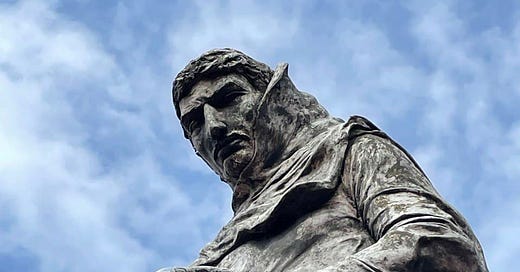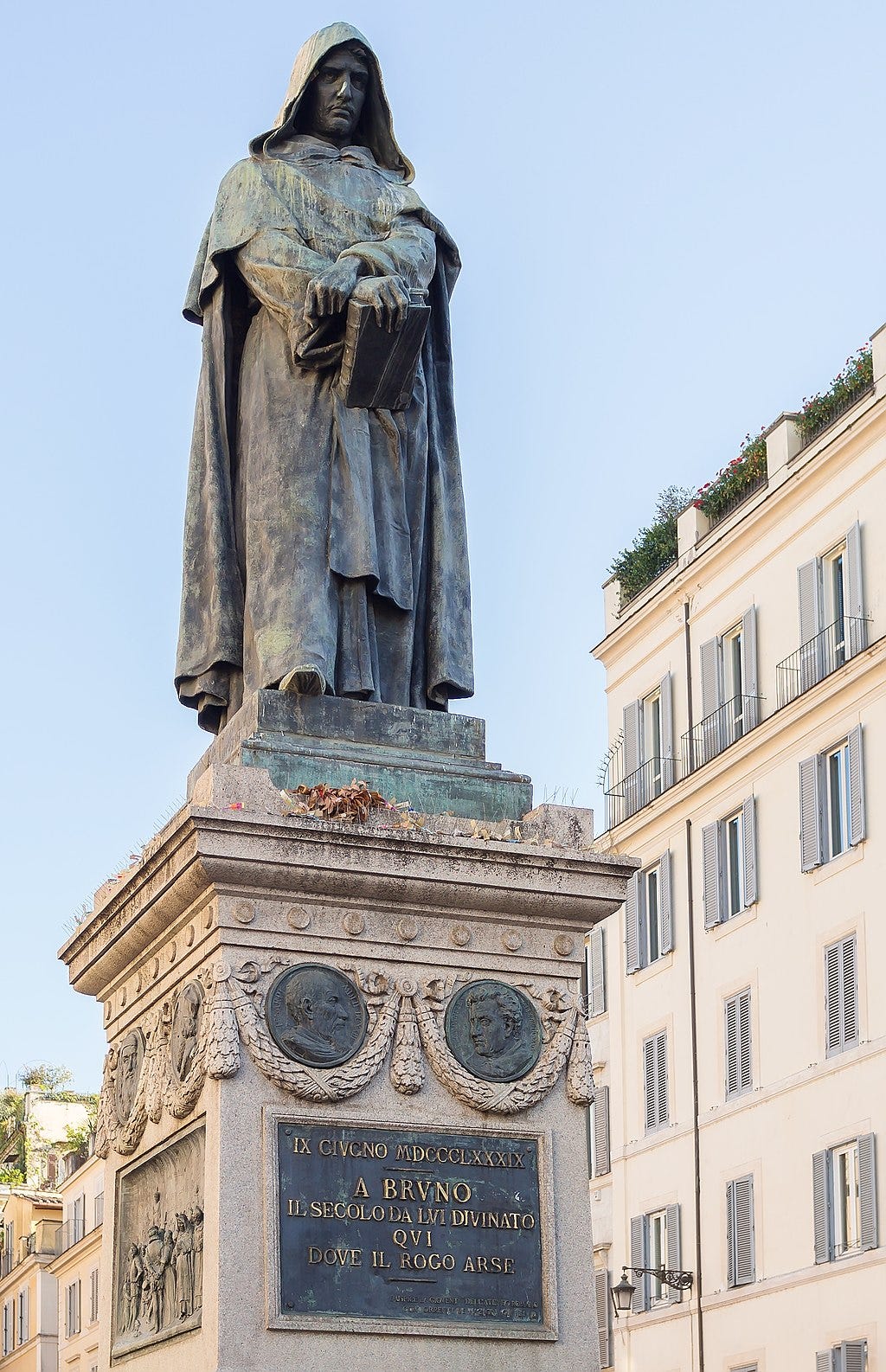Walking through the streets of the Chapinero district of Bogotá one day, I came across an intriguing statue in the park at the corner of Calle 69a and Carrera 9. A man, in a contemplative mood, is in intense thought. It turns out that the statue is of Giordano Bruno (1548-1600). Here is a picture of the statue, taken from below.
This statue of a very much alive Giordano Bruno is in stark contrast to the formal statue that can be found in the Campo de’ Fiori (Field of Flowers) in Rome, where he was burned at the stake in 1600.
The Bogotá statue is also completely different from the macabre sculpture of Bruno, hanging upside down at the stake, to be found in Potsdamer Platz in Berlin.
Bruno was one of the most fascinating thinkers of the sixteenth century. He travelled all over Western Europe, interacting with some of the leading intellectuals of the time, and wrote extensively on a number of topics. And his writing style was completely unique. Here is how Hilary Gatti, formerly Associate Professor of English Literature in Rome, and translator of The Ash Wednesday Supper,1 described her first encounter with Bruno, and his influence on Shakespeare.2
IT ALL BEGAN WITH A COURSE I was giving on Shakespeare’s Hamlet at the University of Rome “La Sapienza” in Italy. During my reading of a small slice of the daunting amount of critical material on Shakespeare’s tragedy …, I came across a reference to a theory that some of Hamlet’s characteristics might have been based on the life and tragic death of Giordano Bruno, in the Campo dei Fiori (The Field of Flowers), in Rome. […] I brought home with me the dialogue especially mentioned on the page I had been reading, La cena de le ceneri, or The Ash Wednesday Supper, in the Einaudi edition of 1955 edited by Giovanni Aquilecchia — a fine scholar who would soon become a major point of reference throughout my Bruno studies. I remember reading it through in a few hours, getting to the end almost out of breath. I found it stunning, overwhelming. What was this? Philosophy or cosmology or drama? Or philosophy and cosmology in the form of a drama? And what kind of language was this? Like no Italian I had ever read or heard anywhere before, either ancient or modern. And how did this man from Nola (where was Nola?) know so much about Elizabethan London? Of one thing only I felt quite sure then, and I have never changed my mind: Shakespeare had been through those pages. Somehow, somewhere, he had either read them or had them read to him. For The Ash Wednesday Supper is an extraordinary theater of conflicting ideas, as indeed (as I would discover later) are all Bruno’s Italian dialogues, and his Latin works as well. […] It is also a work in which Bruno clearly and explicitly depicts a prophetic image of where it would all end: in his death at the stake as a despised heretic. Shakespeare too understood the drama of minds so innovative, so audacious, that their societies were unable to respond to them except by decreeing their eternal silence. [pp.ix-x, emphasis mine]
After reading such an introduction, how could one not also rush to the library (or the Internet), and start reading Bruno?
If you wish to donate to support my work, please use the Buy Me a Coffee app.
Giordano Bruno. The Ash Wednesday Supper. Translated by Hillary Gatti. University of Toronto Press, 2018.
Hillary Gatti. Essays on Giordano Bruno. Princeton University Press, 2011.







Fascinating, thank you. When I went looking it seems that the Latin works were never translated - that seems impossible, do you know?